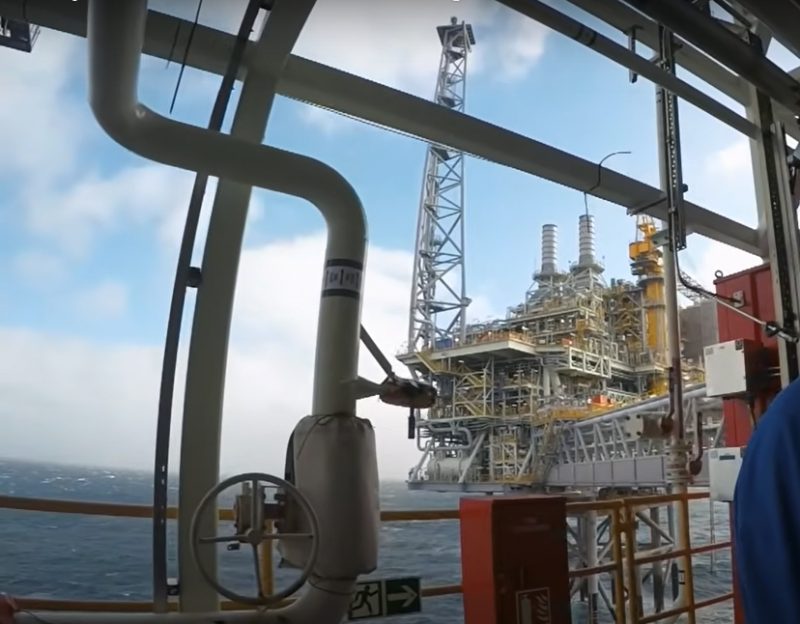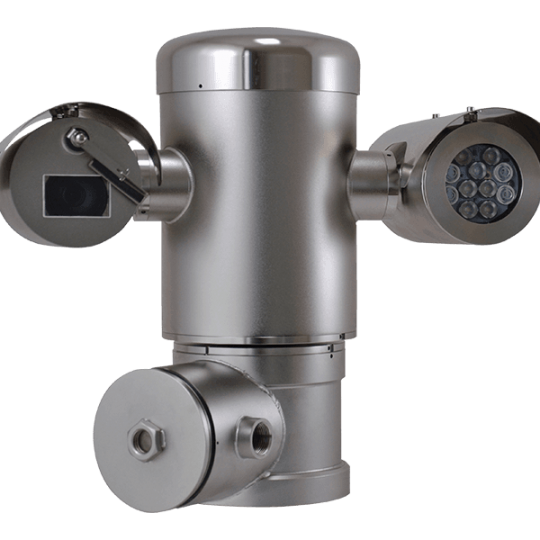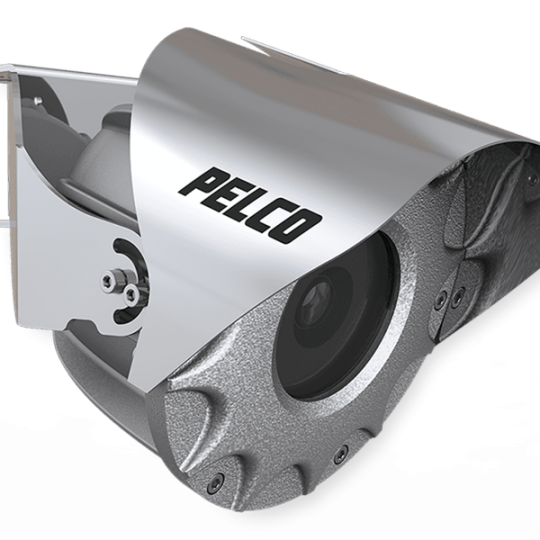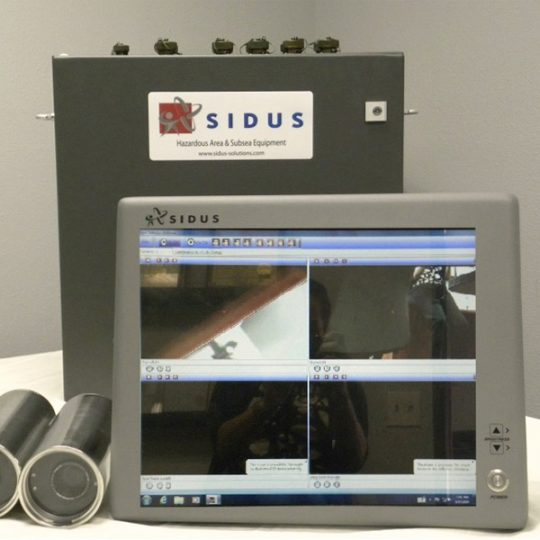Go Energy
Today SIDUS is the leader in product innovation, full stack system integration and build-to-fit custom implementations.
Monitoring & Inspection Systems
are Crucial
In the energy sector, remote monitoring & inspection system solutions with advanced AI capabilities are becoming increasingly important.
SIDUS’ remote topside and subsea monitoring and inspection products and partner technologies meet these needs. Recent advancements have increased CCTV video system features and threat detection capabilities that can be integrated into existing systems, customized, or replaced.
Benefits of AI-Powered Remote Monitoring:
- Increased Safety: Reduce the need for human presence in hazardous environments.
- Operational Efficiency: Streamline monitoring and maintenance processes.
- Cost Savings: Minimize downtime and prevent costly failures through predictive maintenance.
- Environmental Protection: Detection of leaks or spills early to mitigate environmental impact.
- Data-Driven Decision Making: Enhanced data analysis capabilities for better operational decisions.
This is crucial situational awareness in high-risk environments like oil rigs, nuclear plants, and high-voltage electrical networks. By leveraging these technologies, the energy sector can achieve significant improvements in safety and working conditions, equipment efficiency, and structure sustainability.
In the energy sector, remote monitoring & inspection system solutions with advanced AI capabilities are becoming increasingly important.
SIDUS’ remote topside and subsea monitoring and inspection products and partner technologies meet these needs. Recent advancements have increased CCTV video system features and threat detection capabilities that can be integrated into existing systems, customized, or replaced.
Benefits of AI-Powered Remote Monitoring:
- Increased Safety: Reduce the need for human presence in hazardous environments.
- Operational Efficiency: Streamline monitoring and maintenance processes.
- Cost Savings: Minimize downtime and prevent costly failures through predictive maintenance.
- Environmental Protection: Detection of leaks or spills early to mitigate environmental impact.
- Data-Driven Decision Making: Enhanced data analysis capabilities for better operational decisions.
This is crucial situational awareness in high-risk environments like oil rigs, nuclear plants, and high-voltage electrical networks. By leveraging these technologies, the energy sector can achieve significant improvements in safety and working conditions, equipment efficiency, and structure sustainability.

Energy Solutions
SIDUS offers the widest range of hazardous area explosion proof cameras, control stations, monitoring and inspection system solutions. We have the products and experience to meet today’s demanding surveillance and security needs in the energy sector. With products available that are explosion-protected or weatherproof, analog or IP, fixed, dome or PTZ, our experience and proven reliability can meet your specification requirements.
5 Ways We Work
With Clients
We are your partner for subsea and topsides solutions. From fully custom, build to fit implementations to system integrations and more, SIDUS brings you the expertise and experience to get the job done right.
Learn MoreEnergy Sector Specs
By leveraging our expertise in robotics, AI and advanced monitoring and inspection technologies, SIDUS can significantly enhance the safety, efficiency, and security of vessels, crew, equipment and subsea floor structures within the global energy industry.
SIDUS Solutions for the Global Energy Sector:
System Integration and Surveillance Systems:
Security and Surveillance Integration: SIDUS provides hazardous area explosion proof solutions for integrating existing security systems, ensuring seamless operation and enhanced security across all segments.
CCTV Video Observation Stations: Custom-built stations with advanced recognition, thermal, and AI monitoring capabilities, tailored to meet the specific needs of various energy segments.
Advanced Recognition and AI Monitoring & Inspection Systems:
Real-time Monitoring: Utilization of AI for real-time surveillance, anomaly detection, and predictive maintenance.
Data Analysis: Leveraging AI to analyze vast amounts of data for operational efficiency, safety, and preventive measures.
The global energy industry encompasses a diverse range of segments, each with its unique challenges and opportunities. SIDUS, with its comprehensive product and service solutions, is well positioned to address the needs of this sector, particularly in the subsea oil and gas industry, where strong growth is anticipated due to pent-up demand.
Here’s a breakdown of the key segments within the global energy industry and how SIDUS solutions apply:
Oil & Gas:
Upstream segment covers the exploration and production of oil and gas. Applications: Monitoring exploration sites, ensuring safety and security of drilling operations.
Midstream segment covers the transportation and storage of crude or refined petroleum products. Applications: Surveillance of pipelines and transportation routes to prevent leaks and unauthorized access.
Downstream segment deals with refining and processing of crude oil and natural gas, distribution, and retail of the final products. Applications: Overseeing refineries and distribution networks to ensure operational efficiency and safety compliance.
Offshore Wind Power:
Development and maintenance of wind farms located in bodies of water to generate electricity. Applications: Remote monitoring of offshore installations to ensure the integrity and performance of turbines. Surveillance systems to protect against theft and vandalism.
Solar Power:
Harnessing solar energy through photovoltaic cells or solar thermal systems to produce electricity. Applications: Monitoring solar farms to maximize energy production and detect potential issues with panels or infrastructure. Security surveillance to prevent theft and ensure the safety of the installations.
Hydropower:
Generation of power by harnessing the energy from flowing or falling water, typically using dams. Applications: Surveillance of dams and associated facilities to ensure structural integrity and efficient operation. Real-time monitoring for potential safety hazards like flooding or structural weaknesses.
Nuclear Power:
Energy production through nuclear fission processes, involving uranium or other nuclear fuels. Applications: High-security surveillance systems to monitor nuclear facilities, ensuring compliance with safety regulations. Advanced monitoring to detect any anomalies in nuclear reactors and associated infrastructure.
Within the Energy Industry SIDUS works with the oil & gas production leaders, technological mavericks, and energy market giants.
The list is not inclusive but illustrates the diversity, market reach, and depth of field experience of our Team and the diversity of our product applications.
- Bechtel Engineering
- British Petroleum
- Brown & Root Energy
- Chevron Texaco Oil
- Conoco Phillips
- Diamond Offshore
- Exxon Mobil Oil
- Fluor Daniel
- Atkins Houston Offshore Engineering
- National Oilwell Varco
- Noble Drilling
- Pacific Drilling
- Qatar Petrochemical
- Scorpion Drilling LTD
- Seadrill Ltd.
- Shell Oil & Refining
- Transocean Drilling
- Valaris PLC (formerly Ensco Drilling)
Customer-Centric Solutions for Complex Environments
At SIDUS, we prioritize our customers by understanding the unique specifications and requirements of each project. Leveraging our extensive engineering and technical expertise, we guide our clients towards solutions that ensure safety, security, and compliance with the stringent regulations governing hazardous and explosive environments.
Comprehensive Camera Solutions
SIDUS provides an extensive range of cameras designed to meet the specific challenges of various environments.
- Subsea Cameras: Depth ratings from 30 to 6500 meters
- Explosion Proof CCTV: For hazardous areas
- Weatherproof: For harsh conditions
- Hyperbaric and Crane Cameras
- Ultra-High Definition and PoE: For superior image quality and power efficiency
- IP Network, PTZ (Pan, Tilt, and Zoom)
- Low Light, Wide View Lens, and Infrared Illumination (IR)
- Thermal Imaging, Remote Zoom, Auto Iris, and Auto Focus.
Integrated Monitoring and Inspection Systems
We specialize in system integration and the customization of topside and subsea monitoring and inspection systems, offering robust and cost-effective solutions. Essential components like subsea positioners, ultra-bright LED lights, and lasers are part of our comprehensive systems.
Expert Commissioning and Installation Services
Our commissioning and installation services cover every aspect of project management, including:
- Detailed project management
- Inventory sourcing and management
- Inspection of equipment
- System installation
- Site Acceptance Testing (SAT
- Customer training and thorough documentation
Our team of experienced and dedicated staff is ready to deliver excellence at every stage.
CASE STUDIES
- Seadrill
- BOP
- Rapid deployment of anchor bolster inspection systems.
- Petrochemical Refinery Complete topside Ex CCTV system and subsea equipment
In the energy sector, effective project planning for various platforms requires a comprehensive understanding of the types of structures involved, as well as the codes and regulations that govern them. Each platform type has specific requirements that impact equipment and facility specifications.
Subsea Inspections
Leak Detection Systems
Drilling Inspection
Remotely Operated Vehicles at the Wellhead
Inspection Acoustic Systems
Riser Replacement Monitoring
FPSO Chain Monitoring
BOP Inspection/Storage
Guidewire/Anchor Inspections
Platform Pilings
Ballast Control
Topsides Applications
Helicopter Operations
Ex Proof CCTV Video Surveillance & Security Systems
Crane Cameras and Mounts
What is an ATEX environment?
In a location defined as an ATEX area only equipment protected and certified for that particular zone can be used. The protection of the equipment has to be made in such a manner that any problem inside the equipment is becoming an ignition source for the possible flammable environment outside the equipment!
What are IEC 60079 series standards?
The majority of codes and standards used globally for the certification of equipment in gas hazardous environments are based upon the IEC 60079 series standards pertaining to Electrical Apparatus for explosive gas atmospheres. However, national adaptations to these standards may result in the requirement for certification equipment at a recognized test laboratory in the country for which the equipment is to be installed and used.
The certification scheme used in the European Community (ATEX) and North America is dominant within the Ex market. The schemes differ in regard to zone classification and where certain protection types can be used.
If you sell equipment for use in explosive atmospheres in the EU, your equipment must conform to the ATEX Directive, named after the French ATmosphère EXplosible.
Does the European Common Market have Ex product certifications?
All equipment sold and manufactured for use in within the European Common Market shall be tested and certified according to relevant CENELEC / EN norms referenced in the ATEX (Atmosphere Explosible) product directive 94/9/EC. The directive was issued January 1, 1997, and the transition period ended June 30, 2003.
The directive does include mechanical (non-electrical) equipment and requires that the manufacturer has an approved quality assurance system in place. There are no significant changes in norms pertaining to test and production of Ex equipment with the exception of product marking. The product marking / label shall be easy to read, non-removable, and include Manufacturer’s name and address, CE mark, serial number, product series or product name, year of production, Ex symbol, product group and category, ”G” or ”D” for gas or dust, and other relevant safety information.
What is UL Certification and why is it important?
UL is the world leader in Safety Testing and Global Certifications. They provide testing and certification solutions for North America, South America, Europe, the Middle East, Africa, Asia Pacific and Australia.
The UL Marks and certifications facilitate access to all world markets. UL offers the highest quality and integrity, and the UL Mark is the most recognized safety certification mark in North America.
What is the Ex Mark in Europe?
Ex equipment marketed in Europe must be certified and marked according to the ATEX Directive 94/9/EC, which is the Directive for “Equipment and Protective Systems Intended for Use in Potentially Explosive Atmospheres”.
This Directive requires the Epsilon-x marking as well as the CE marking. Some equipment must also meet the requirements of other relevant Directives and/or standards. When you CE mark products for conformity with the ATEX Directive it is mandatory to work with an independent third-party organization with Notified Body status (unless you manufacture products in category 3 for Zone 2). Likewise, your production system must have a Production Quality Assurance Notification issued by an ATEX Notified Body. UL’s Danish affiliate, UL Demko A/S is an ATEX Notified Body.
What is the UL marking for the USA and Canada?
In North America, potentially explosive atmospheres are known as “hazardous locations” or “HazLoc” and they are classified according to the Division system. The US National Electric Code and the Canadian Electric Code constitute the frames for the hazloc system in North America. However, Canada bases the system on the IEC zone system whereas the USA implemented the IEC-based zone system in parallel with the Division system.
The UL certification includes a product specific factory inspection known as Follow-up Services or FUS. The inspection will be repeated periodically.
What is a Zone Classification in explosive atmospheres?
The zone system classifies the areas in a facility based on how often and how long an explosive atmosphere is present. Local authorities evaluate facilities with risk of explosion and then zone values are mapped. Your equipment must be evaluated to suit the zone where it is to be used.
What is the topside of an Offshore oil rig, or storage or offloading platform?
Topside refers to the parts above the waterline. The deck, the drilling equipment, rigging, processing, crew quarters, and other structures that are above the underwater structure.
Are there regulations for topside operations on an Offshore Platform?
The environment on the open ocean at sea is hostile and unforgiving. Surveillance systems, monitoring and inspection systems, lighting, mounting devices, and cameras used on Offshore Platforms are tightly regulated. These systems are designed to withstand both the natural conditions at sea, and the explosive and hazardous environments of the cargo – oil & gas, explosive materials, and dust. International regulations and standards are required and in place for manufacturers of equipment used in hazardous and explosive environments.
Why is Situational Awareness important topside on an Offshore Platform, Ship or Floating Offshore Rig?
Situational awareness topside in explosive, dust filled, and hazardous environments is a crew and equipment safety and security issue. Topside video CCTV system integration provides a moment-by-moment ability to monitor and assess the state of the platform [ship, aircraft, plant, dam, machinery, etc.], its systems, and its environments. Specialty Crane camera systems provide additional safety and situational awareness topside, saving time, avoiding costly equipment damage and safe real time observation of assets and the crew in difficult to see locations.
Can existing camera and mounting equipment be integrated into a new, more expanded system?
SIDUS has the skill, engineering capability and technical experience to provide a system wide integration, install necessary upgrades, and train your crew on the intricate and detailed observations at your fingertips with a completely integrated and operational topside security and monitoring system.
What type of structures are used for platforms in the energy sector?
Here’s a detailed look at the types of platforms in the Energy Sector:
Fixed Platforms: These are anchored to the seabed and are typically used for shallow waters. Commonly used in oil and gas production.
Regulatory Codes: American Bureau of Shipping (ABS), U.S. Coast Guard (USCG), Det Norske Veritas (DNV)
Floating Production Systems: These include Floating Production Storage and Offloading (FPSO) units and Semi-submersible rigs. Suitable for deeper waters.
Regulatory Codes: ABS, USCG, DNV
Tension Leg Platforms (TLPs): Buoyant platforms tethered to the seabed, reducing vertical motion. Used in deepwater drilling and production.
Regulatory Codes: ABS, USCG, DNV
Compliant Towers: Tall, flexible structures that can withstand lateral forces. Typically used in deepwater scenarios.
Regulatory Codes: ABS, USCG, DNV
Spar Platforms: Deepwater floating platforms with a cylindrical, spar-shaped hull. Suitable for ultra-deep waters.
Regulatory Codes: ABS, USCG, DNV
Mobile units with retractable legs that can be raised or lowered. Used for shallow to moderate water depths.
Regulatory Codes: ABS, USCG, DNV
SIDUS engineering and technical experience guide our clients towards solutions that not only provide safety and security, but compliance within the stringent set of rules and regulations that are required in the hazardous area explosive environment.
What Regulatory Agencies Govern the Oil & Gas Industry?
Key Regulatory Bodies and Codes
American Bureau of Shipping (ABS):
Role: Provides classification services, ensuring the structural and operational integrity of marine-related facilities.
Key Areas: Structural design, safety systems, and environmental compliance.
U.S. Coast Guard (USCG):
Role: Oversees maritime safety, security, and environmental protection.
Key Areas: Safety standards, operational procedures, and emergency preparedness.
Det Norske Veritas (DNV):
Role: Offers risk management and quality assurance services across various industries, including energy.
Key Areas: Risk assessment, structural analysis, and certification of offshore units.

















